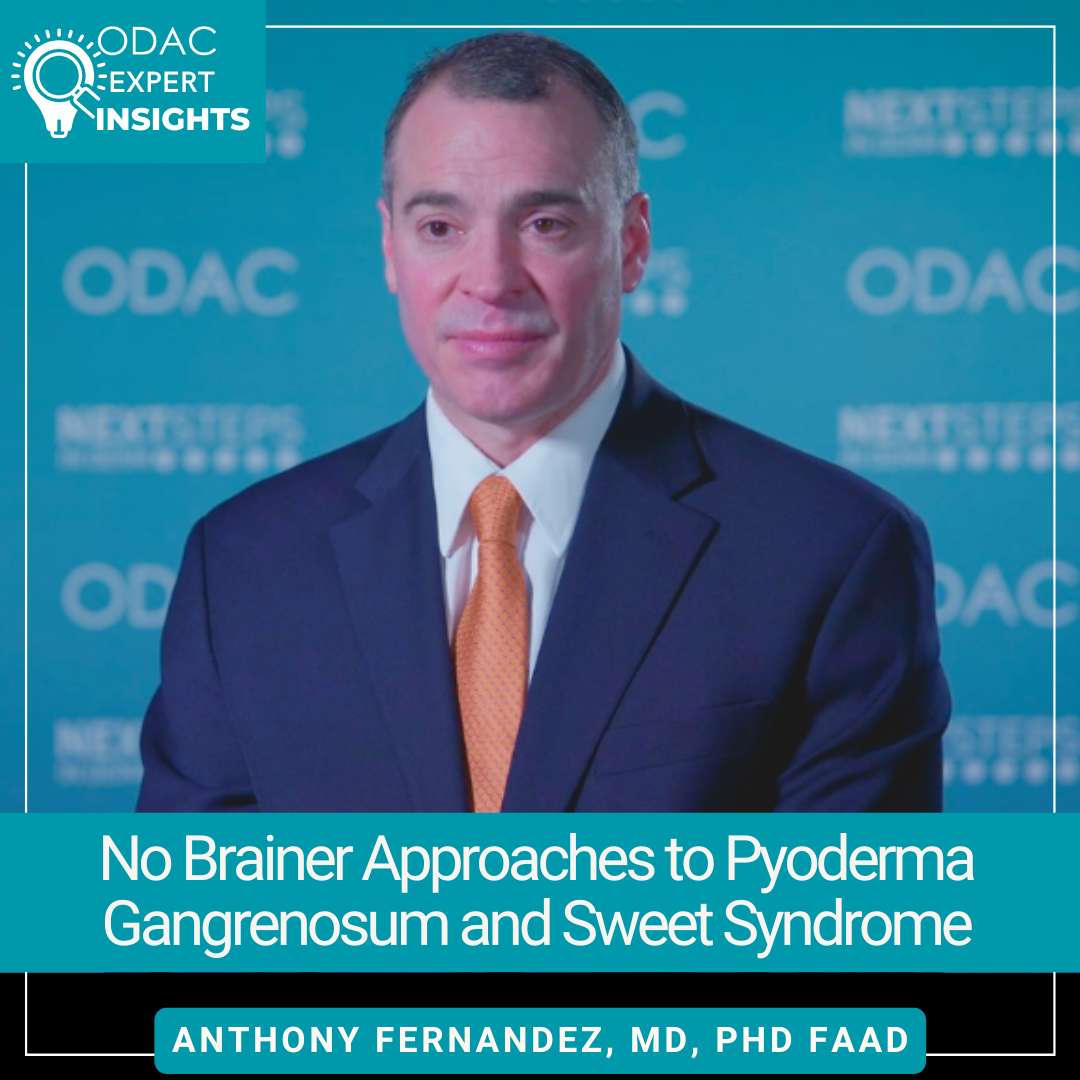Pyoderma gangrenosum and Sweet syndrome are the most common neutrophilic dermatoses that a dermatologist will see in clinic, according to Dr. Anthony Fernandez, director of medical and inpatient dermatology at the Cleveland Clinic. Next Steps in Derm, in partnership with the ODAC Dermatology Conference, interviewed Dr. Fernandez, who shared criteria for making an accurate pyoderma gangrenosum diagnosis. Hear about treatment options and why wound healing expertise is key when managing these patients. Learn how treating Sweet syndrome may be easier than treating pyoderma gangrenosum. Plus find out about a late-onset, auto-inflammatory disease that may be an underlying disease in certain patients who present with rashes that are consistent with Sweet syndrome.
Further Reading
If you want to read more about neutrophilic dermatoses, check out the following articles published in the Journal of Drugs in Dermatology:
ABSTRACT
Pyoderma gangrenosum (PG) is a challenging, rare, ulcerating skin disease characterized by neutrophilic abundance and absence of infection, often associated with systemic diseases. We present a 25-year old previously healthy female with a 1.5-year history of treatment refractory PG. Features of Cushing’s syndrome such as facial plethora, striae, and lipodystrophy were noted on exam, which prompted several studies that ultimately revealed an adrenal adenoma. Following surgical excision of the adenoma, symptoms rapidly resolved and systemic immunosuppressants were discontinued. This rare case highlights the importance that adrenal adenoma and resultant Cushing’s syndrome may be a driver of PG despite the pathophysiologic paradox.
Deep Sweet Syndrome Secondary to Pegfilgrastim
ABSTRACT
Sweet syndrome, or acute febrile neutrophilic dermatosis, is a skin condition consisting of erythematous papules and plaques in association with fever, neutrophilia, and a neutrophilic infiltrate that typically involves the papillary dermis. Although development is most commonly idiopathic, medications are also frequently associated with the eruption, notably, the granulocyte colony-stimulating factor (G-CSF), filgrastim. Pegylated G-CSF, despite similar activity, is not commonly reported, with only four published cases. We present a case of drug-induced sweet syndrome with unique histologic features (deep inflammatory infiltrate) in association with the usage of pegfilgrastim in the treatment of invasive ductal carcinoma of the breast.
Did you enjoy this video interview? Find more here.

